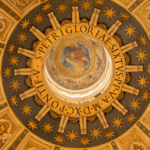The Evolution of Middle-Earth: Unveiling the Legendary Beginnings of The Lord of the Rings Trilogy
In the world of literature, few works have captured the imagination and hearts of readers quite like J.R.R. Tolkien’s The Lord of the Rings trilogy. With its sprawling world, rich mythology, and unforgettable characters, Middle-Earth has become a cultural phenomenon that continues to captivate audiences to this day. But how did Tolkien create this intricate and detailed world? Let’s delve into the evolution of Middle-Earth and uncover the legendary beginnings of The Lord of the Rings trilogy.
A Creative Mind at Work: Tolkien’s Early Years
John Ronald Reuel Tolkien was born in 1892 in Bloemfontein, South Africa. From a young age, he showed a great aptitude for languages, literature, and storytelling. During his school years, Tolkien began constructing his own fictional languages, which would later become an integral part of the Middle-Earth mythos. His passion for myth and folklore would also shape his future works.
As Tolkien grew older and pursued his studies, he became deeply interested in the legends and mythologies of various cultures. From Norse mythology to Welsh folklore, Tolkien immersed himself in the rich tapestry of these ancient tales. This fascination with myth would lay the foundation for the creation of Middle-Earth.
The Silmarillion: The Genesis of Middle-Earth
One of the key texts in understanding the origins of Middle-Earth is The Silmarillion. This collection of stories and myths, compiled and edited by Tolkien’s son Christopher, provides a glimpse into the early history of the world Tolkien created.
In The Silmarillion, readers are introduced to the Valar, the powerful beings who shaped the world, as well as the Elves, Men, and other races that populate Middle-Earth. The mythology presented in this work forms the backbone of the later stories found in The Lord of the Rings trilogy.
The Creation of Middle-Earth
Tolkien’s Middle-Earth began to take shape with the writing of The Hobbit. Originally intended as a standalone children’s book, this tale of Bilbo Baggins and his adventures in the wild would lay the groundwork for the epic tale to come.
However, it was not until Tolkien began working on its sequel, The Lord of the Rings, that the full scope of Middle-Earth was realized. As he delved deeper into the history and mythology of the world, Tolkien developed a detailed timeline, complete with genealogies, maps, and intricate backstories for each of his characters.
The Lord of the Rings: A Triumph of Imagination
When The Lord of the Rings was finally published in 1954, it was met with both critical acclaim and commercial success. Readers around the world were enchanted by the story of Frodo Baggins and his quest to destroy the One Ring.
What made The Lord of the Rings so unique was Tolkien’s attention to detail and his ability to create a fully realized world. From the elvish languages to the histories of each kingdom, Middle-Earth felt like a living, breathing place. Tolkien’s passion for mythology and linguistics gave his work a depth and richness rarely seen in fantasy literature.
The Lasting Legacy
More than six decades after its publication, The Lord of the Rings continues to be a beloved and influential work. Its impact on the fantasy genre cannot be overstated, with countless authors drawing inspiration from Tolkien’s world and storytelling techniques.
The success of The Lord of the Rings trilogy also paved the way for the resurgence of fantasy in popular culture, leading to the creation of other beloved franchises such as George R.R. Martin’s A Song of Ice and Fire series and the blockbuster television series Game of Thrones.
In Conclusion
The evolution of Middle-Earth from the early stages of Tolkien’s imagination to the fully-realized world of The Lord of the Rings trilogy is a testament to the power of creativity and dedication. Tolkien’s passion for language, myth, and storytelling has left an indelible mark on literature and popular culture. Through The Silmarillion, The Hobbit, and The Lord of the Rings, readers can discover the legendary beginnings of Middle-Earth and immerse themselves in one of the most captivating worlds ever created.
FAQs
1. What is the significance of “The Evolution of Middle-Earth” in The Lord of the Rings Trilogy?
The Evolution of Middle-Earth sheds light on the origins and development of J.R.R. Tolkien’s fantasy world, providing insight into the creation of the iconic trilogy.
2. How did J.R.R. Tolkien’s early works pave the way for Middle-Earth?
Tolkien’s early works, such as “The Book of Lost Tales,” served as the foundation for Middle-Earth, introducing key elements like Elves, Dwarves, and the concept of a Dark Lord.
3. What role did “The Silmarillion” play in the evolution of Middle-Earth?
“The Silmarillion” expanded Tolkien’s mythical universe by delving into the history, cosmology, and origins of Middle-Earth, providing a rich backstory that influenced the events of The Lord of the Rings.
4. How did Tolkien’s linguistic expertise shape Middle-Earth?
Tolkien’s deep knowledge of languages played a significant role in the creation of Middle-Earth, as he developed multiple Elvish languages (e.g., Quenya and Sindarin) with their own unique vocabularies and grammar.
5. What were some key influences on Tolkien’s creation of Middle-Earth?
Tolkien drew inspiration from various mythologies, folklore, and his personal experiences as a soldier during World War I. Elements from Norse, Celtic, and Germanic mythologies can be seen throughout Middle-Earth.
6. How did Middle-Earth evolve from “The Hobbit” to The Lord of the Rings Trilogy?
Middle-Earth expanded significantly in scope and depth as Tolkien wrote “The Lord of the Rings,” with new lands, cultures, and characters introduced while building upon the events of “The Hobbit.”
7. What maps and illustrations played a role in depicting Middle-Earth’s evolution?
Tolkien created detailed maps and illustrations to visualize and document the changing landscape and creatures of Middle-Earth. These artistic representations provided further insight into the evolution of the world.
8. How did Tolkien’s revisions and continuous development impact Middle-Earth?
Tolkien revised and refined his writings throughout his life, constantly developing and expanding Middle-Earth’s history and mythology. This ongoing process contributed to the depth and authenticity of the world.
9. How did the publication of “The History of Middle-Earth” series contribute to understanding its evolution?
“The History of Middle-Earth” series, compiled and edited by Tolkien’s son Christopher Tolkien, offers readers a comprehensive look into their creation, featuring early drafts, notes, and commentary that reveal the evolution of Middle-Earth.
10. What is the enduring legacy of Middle-Earth in popular culture?
Middle-Earth’s enduring legacy lies in its immense influence on modern fantasy literature, films, and video games. It has become a benchmark for world-building, inspiring countless authors and captivating audiences worldwide.




































